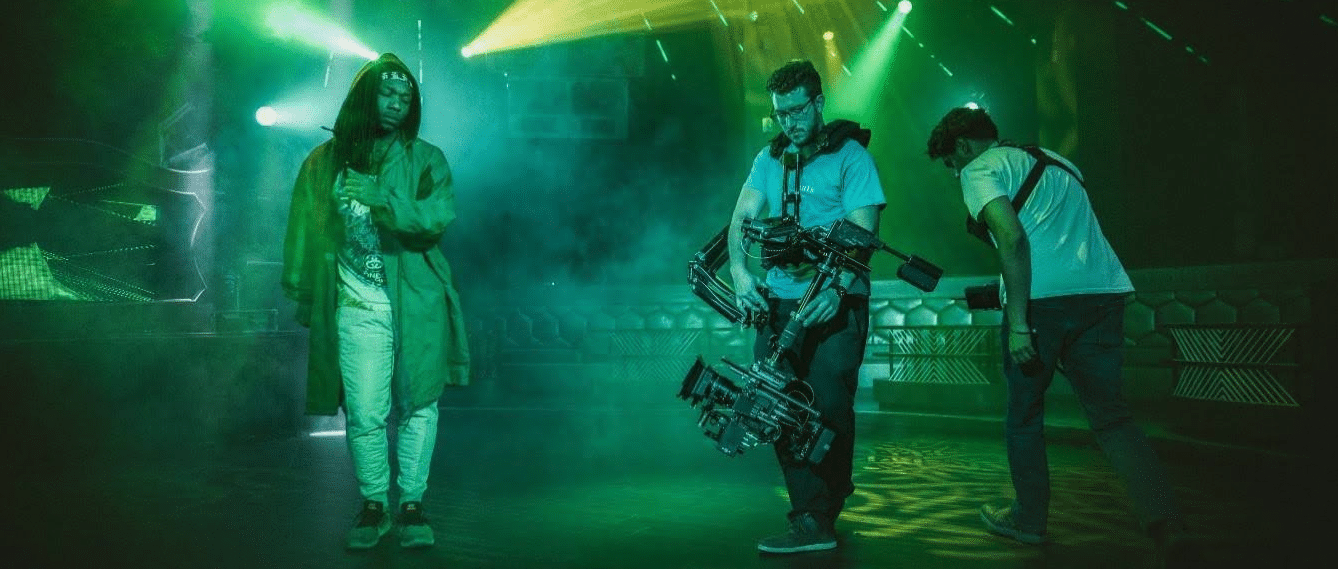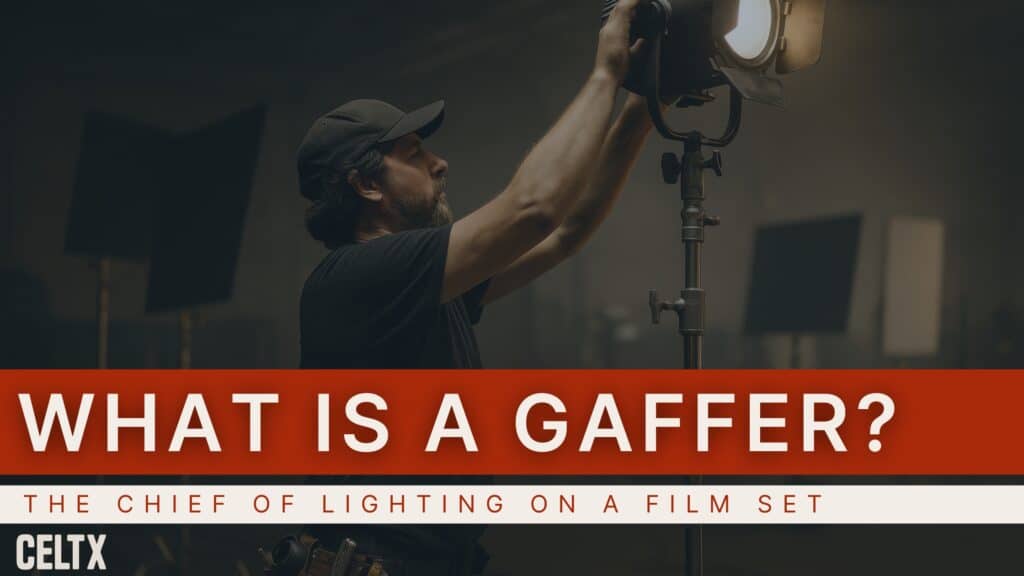
Lights, camera…
But wait, before the camera rolls and the actors hit their marks, someone has already sculpted the mood, carved out the shadows, and painted the scene with light. That someone is the Gaffer, the unsung hero of a perfectly lit scene.
If you’ve ever watched a film and felt the tension of a dimly lit hallway, the warmth of golden hour, or the eerie glow of a horror scene, you’ve felt the Gaffer’s touch. They’re not just the chief lighting technician on a film set; their work is just as much about artistry as about electricity!
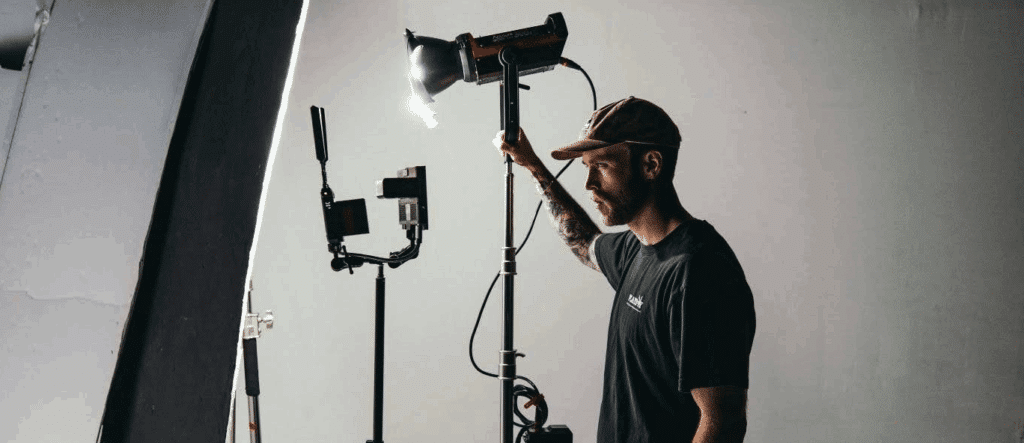
Planning to make a film? Well, then you must understand the Gaffer’s role in bringing your script to life. In today’s blog, we’ll be pulling back the curtain on the person who literally lights the set.
We’ll explore a Gaffer’s responsibilities, their team and what it takes.
…and action!
Table of Contents
- What is a Gaffer?
- The Gaffer’s Core Responsibilities
- The Gaffer’s Team
- Key Skills for a Gaffer
- A Day in the Life of a Gaffer On Set
- How to Become a Gaffer: Career Path and Tips
- FAQs
- Conclusion
What is a Gaffer?
The term ‘Gaffer’ may sound quirky, but it’s steeped in film tradition. Originally a British slang for ‘boss’, it found its way into the film world to describe the head of the electrical department, responsible for executing the lighting plan.
So, in short:
The Gaffer is the chief lighting technician. They work closely with the Director of Photography (DP) to bring the visual tone of a film to life.
Want to learn more about the jobs on a film set and beyond? Then our dedicated blog is for you! Check out Beyond the Set: Exploring Different Jobs in the Film Industry.
The Gaffer’s Core Responsibilities
So, let’s break things down. What does a Gaffer actually do?
Planning and Executing Lighting Plans
Before a single light is plugged in, the Gaffer is already deep in prep. They study the script, consult with the DP, and help design a lighting plan that supports the story’s emotional beats and visual style.
This involves:
- Scouting locations to assess natural light and power access
- Choosing lighting equipment based on each scene’s needs
- Creating lighting diagrams that map out setups for each shot
- Scheduling setups to align with the shooting plan
Being a Gaffer is a blend of technical precision and creativity. A good Gaffer shapes the whole atmosphere of a scene.
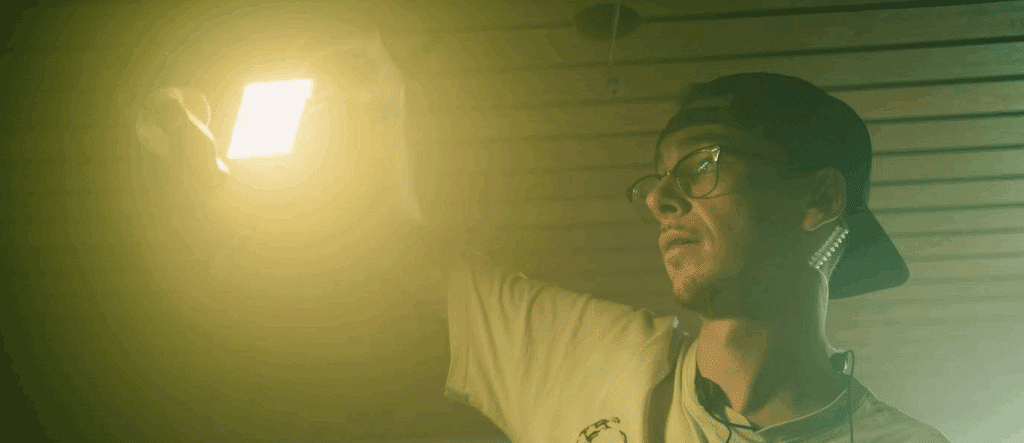
Managing the Lighting Crew (The Gaffer’s Team)
Once a plan is in place, the Gaffer leads the lighting crew to execute it. This includes:
- Delegating tasks to the Best Boy and Electricians (more on them a little later!)
- Coordinating with other departments such as sound or camera to avoid conflicts
- Troubleshooting issues as they occur, from blown fuses to last-minute lighting changes.
Gaffers are key leadership figures on a film set. They must keep their team efficient, safe, and responsive to ever-changing circumstances.
Working with the Director of Photography (DP)
The Gaffer and Director of Photography/Cinematographer are creative partners on a film set. While the DP makes the decisions surrounding the overall look of a film, the Gaffer is the one who makes it happen.
So, how do they collaborate? Well, the Gaffer’s job is to:
- Translate the DP’s vision into practical lighting setups
- Adjust lighting during both rehearsals and takes
- Offer creative input on how to achieve specific moods or effects
The relationship between the DP and Gaffer is built on trust, communication, and above all, a shared love of visual storytelling.
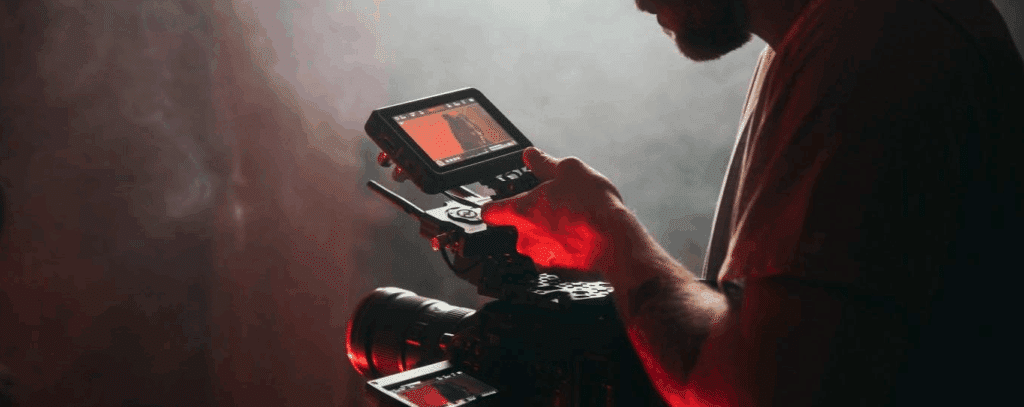
Harold Skinner breaks down the role of a Gaffer in more detail with Indy Mogul, alongside some top tips on how to tell a story with lighting. Check it out below:
Planning a shoot and need to organize your crew? Celtx’s Production Management tools help you create crew breakdowns, schedules, and call sheets with ease.
Click here to try it today.
The Gaffer’s Team
No Gaffer works alone. Their crew is essential to getting the job done quickly and safely.
Gaffer team assemble!
Best Boy
Despite the name, the Best Boy isn’t a single gendered role. It could be anyone. There are two types of Best Boy: Best Boy Electric (for the Gaffer) and Best Boy Grip (for the Key Grip).
For this blog, we’ll be focusing on the Best Boy Electric. They are the Gaffer’s right hand, who:
- Handles logistics like equipment rentals and crew scheduling
- Manages power distribution and cable runs
- Supervises Electrician’s and ensures safety protocols are followed
Think of them as the operations manager of the lighting department.
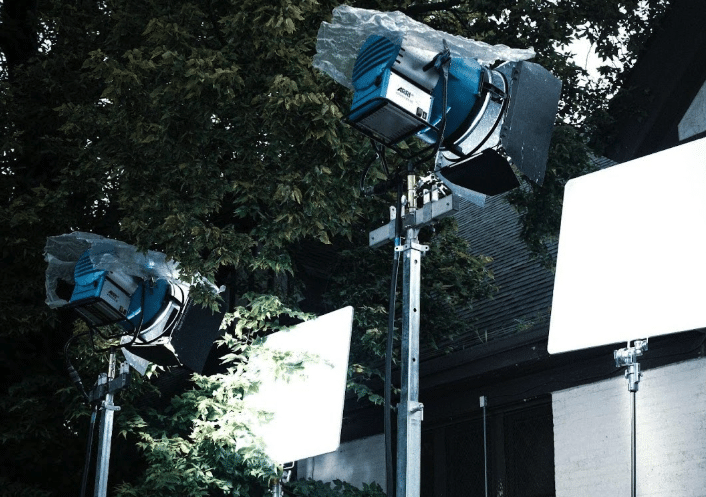
Electrician
Electricians (also known as Sparks in the UK) are the boots-on-the-ground crew. They:
- Set up and rig lights
- Run cables and power sources
- Maintain and troubleshoot equipment
They are the ones climbing ladders, adjusting barn doors, and making sure every light hits its mark.
Key Skills for a Gaffer
Gaffers have way more responsibility than just plugging things in. Their role requires a unique blend of skills. Let’s explore them further.
Technical Knowledge
A Gaffer must understand how to use a plethora of technology. Such as:
- Lighting instruments (LEDs, HMIs, tungsten, etc.)
- Power loads and distribution
- Color temperature and light quality
- Safety standards and electrical regulations
Gaffers are part technician and part engineer.
Creativity and Problem-Solving
Lighting is all part of a film’s storytelling and plays a huge part in setting the atmosphere. A Gaffer’s role in the creative side of filmmaking includes:
- Interpreting the emotional tone of a scene
- Adapting to changing conditions, such as weather and time constraints
- Solving problems quickly, like how to light a cramped space or simulate moonlight indoors
While aesthetics are important to a Gaffer, they make sure things are achieved practically.
Leadership
A Gaffer leads a team, communicates with multiple departments, and keeps the shoot moving. That means:
- Delegating effectively
- Staying calm under pressure
- Advocating for their crew’s safety and needs
Gaffers truly are the backbone of the lighting department.
A Day in the Life of a Gaffer On Set
Let’s put things into perspective and walk through a typical day for a Gaffer on set.
6am | Call Time
The Gaffer arrives early to prep. They check the shot list, the day’s call sheet, review scenes, and coordinate with the Best Boy.
7am | Lighting Setup Begins
The crew starts rigging lights for the first scene. The Gaffer oversees placement, angles, and power sources, adjusting based on the DP’s feedback.
9am | First Shot
As cameras roll, the Gaffer monitors the lighting. If the DP wants tweaks, the Gaffer makes them quickly. Changes can be anything from adding diffusion, changing gels, or repositioning fixtures.
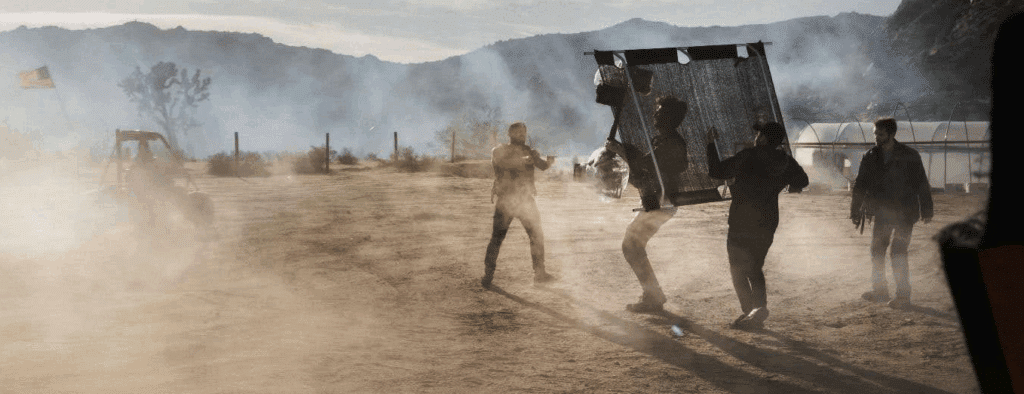
12:30pm | Lunch Break
The crew eats, but the Gaffer might use this time to prep the next setup or troubleshoot issues.
1:30pm | Afternoon Scenes
The lighting setups change with each scene. The Gaffer keeps things moving and ensures transitions are smooth and safe.
6pm | Wrap
Once shooting ends for the day, the Gaffer oversees the breakdown of equipment and checks that everything is stored properly.
7pm | Debrief and prep
The Gaffer meets with the DP to discuss the next day’s plan. Then it’s home, or back to the hotel if on location, before doing it all again.
Of course, timings may be slightly different depending on whether it’s a day or night shoot, but this gives you a general idea.
And to wrap up this section, we have an interview with a real-life gaffer. Jim Plannette is a veteran Gaffer with countless projects to his name. Check out his interview with AF Cinema here.
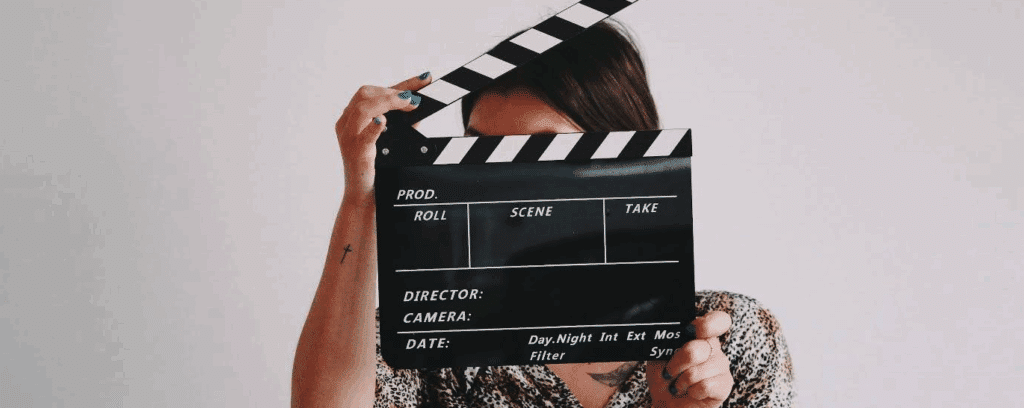
Celtx connects your script to your entire team,
from the Director to the Gaffer, in one seamless workflow.
Sign up today (it’s free)!
How to Become a Gaffer: Career Path and Tips
If the idea of crafting cinematic lightscapes excites you, you might be wondering: How do I become a Gaffer? Like many film roles, there’s no single path, but there are some tried-and-true steps that can help you get there.
How to Become a Gaffer
- Start as a Runner or Trainee
Most Gaffers begin at the bottom of the ladder… literally. Entry-level roles like Lighting Trainee or Production Runner are your foot in the door. You’ll learn set etiquette, observe how departments work together, and start building your network.
- Work Your Way Up
From trainee, you’ll likely move into roles like:
– Electrician/Spark (handling lights and cables)
– Best Boy Electric (managing logistics and crew)
– Gaffer (leading the department)
Each step teaches you more about the craft and the chaos of set life. - Learn the Craft
Formal education isn’t required, but it helps. Courses in cinematography, electrical safety, and lighting design can give you a strong foundation. Many Gaffers also learn on the job, soaking up knowledge from DPs and fellow crew members.
- Build Relationships
Film is a collaborative industry. Your reputation and relationships matter. Be reliable, curious, and kind. The Gaffer role often comes through referrals. DPs want to work with people they trust.
- Stay Curious
Technology evolves fast. LEDs, wireless DMX, and virtual production are changing the game. A great Gaffer stays up-to-date and isn’t afraid to experiment, so if it’s a career path you want to go down, start doing this now!
FAQs
The Gaffer is the head of the lighting department. The Best Boy Electric is their assistant, handling logistics and crew management.
The Gaffer handles lighting. The Key Grip manages rigging and camera movement (like dollies and cranes). They often work together, especially when lights need to be mounted or moved.
It varies by location, experience, and project size. In the US, rates can range from $400–$800 per day. Union jobs often pay more (IATSE is the official union for Gaffers). Whereas in the UK, a Gaffer might earn between £250–£500 per day on a mid-budget shoot.
While Gaffers aren’t household names, some have earned industry respect. John Higgins, known for his work on Harry Potter and Skyfall, is one example. But most Gaffers prefer to let their work speak through the screen.
Conclusion
The Gaffer is more than just a technician; they’re a visual storyteller, a leader, and a problem solver. Without them, a film would be flat, lifeless, and visually incoherent. They bring the director’s vision to life, one light at a time, shaping mood, emotion, and atmosphere with every fixture and filter.
Their work often goes unnoticed by audiences, but it’s felt in every frame. From the soft glow of a romantic scene to the stark contrast of a thriller, the Gaffer’s influence is everywhere. They are the silent architect of cinematic light, and without them, the magic of movies would never shine as brightly.
Ready to start planning your next production? Click here to get started for free today.
Up Next:
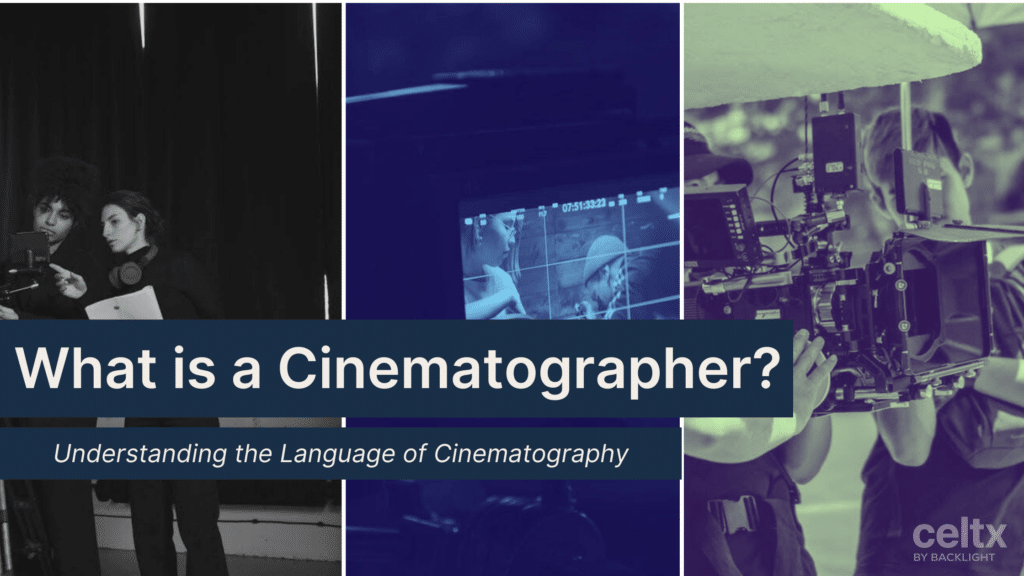
What is a Cinematographer, and What Do They Do?
Once you understand how gaffers shape light, explore how cinematographers use that light to craft the film’s visual story.
